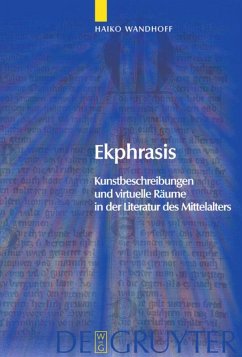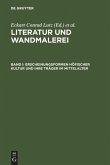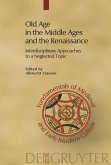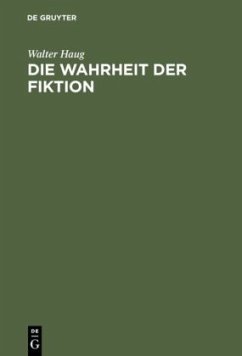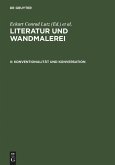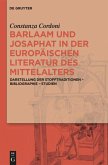The reader of an artistic description (ecphrasis) is subjected to a constant oscillation between the text and the image. Using various examples, the present study examines the insights which medieval literary works open up to their readers by continually inserting descriptions of pictures and architecture into the linear flow of narrative texts. Wandhoff attempts to reconstruct a history of ecphrasis, which extends from the epics of antiquity to the post-classic courtly romance at the end of the 13th century.
The argumentation is led by three principal concepts - the analysis of literary descriptions as memorial pictures, as reflections of the visual in the verbal or the macro-narrative in the micro-narrative, or as a virtual display.
Der Leser einer Kunstbeschreibung (Ekphrasis) ist bei der Lektüre einem ständigen Oszillieren zwischen Text und Bild ausgesetzt. Die vorliegende Untersuchung geht anhand verschiedener Beispiele den Einsichten nach, die die mittelalterliche Literatur ihren Lesern eröffnet, indem sie immer wieder Bild- und Architekturbeschreibungen in den linearen Fluss narrativer Texte einschaltet. Die Arbeit versucht, eine Geschichte der Ekphrasis zu rekonstruieren, die sich vom antiken Epos bis zum nachklassischen höfischen Roman im ausgehenden 13. Jahrhundert erstreckt.
Vor allem drei Konzepte leiten die Argumentation: die Analyse literarischer Kunstbeschreibungen als Memorialbilder, als Spiegelungen des Visuellen im Verbalen bzw. der Makro- in der Mikroerzählung sowie als virtueller Schauraum.
The argumentation is led by three principal concepts - the analysis of literary descriptions as memorial pictures, as reflections of the visual in the verbal or the macro-narrative in the micro-narrative, or as a virtual display.
Der Leser einer Kunstbeschreibung (Ekphrasis) ist bei der Lektüre einem ständigen Oszillieren zwischen Text und Bild ausgesetzt. Die vorliegende Untersuchung geht anhand verschiedener Beispiele den Einsichten nach, die die mittelalterliche Literatur ihren Lesern eröffnet, indem sie immer wieder Bild- und Architekturbeschreibungen in den linearen Fluss narrativer Texte einschaltet. Die Arbeit versucht, eine Geschichte der Ekphrasis zu rekonstruieren, die sich vom antiken Epos bis zum nachklassischen höfischen Roman im ausgehenden 13. Jahrhundert erstreckt.
Vor allem drei Konzepte leiten die Argumentation: die Analyse literarischer Kunstbeschreibungen als Memorialbilder, als Spiegelungen des Visuellen im Verbalen bzw. der Makro- in der Mikroerzählung sowie als virtueller Schauraum.
"Wandhoff's excellent Ekphrasis provides illuminating answers as to why we should look and read closely."
Helmut Puff in: Journal of English and Germanic Philology 2/2006
"Mit großem Interesse verfolgt man Wandhoffs Darstellungen, die uns von der Antike bis ins späte Mittelalter führen, um im Schluß sogar noch den Sprung bis in die Postmoderne zu schaffen, wo in Science-Fiction Texte höchst ungewöhnliche, ekphratisch anmutende Motive integriert worden sind. Die gründliche Arbeit, die epochale Dimensionen besitzt, schließt mit einer Bibliographie und einem Namenregister."
Albrecht Clasen in: Mediaevistik 18/2005
"Ekphrasis is a valuable contribution, and provides avenues of approach from which future studies will surely draw."
James Brown in: German Quarterly 1/2005
"Es ist ein Verdienst der Arbeit Wandhoffs, eine große Menge auch an theoretischen Arbeiten zur Ekphrasis gesichtet und geordnet zu haben, um den eigenen Ansatz daraus zu entwickeln. [...] Künftige Arbeiten, die mittelalterliche Texte unter narratologischen oder intertextuellen Fragestellungen behandeln, werden vielfältig Anregungen aus dieser Studie beziehen und dankbar auf sie als Grundlage zurückgreifen."
Michael Rupp in: Arbitrium 2/2004
Helmut Puff in: Journal of English and Germanic Philology 2/2006
"Mit großem Interesse verfolgt man Wandhoffs Darstellungen, die uns von der Antike bis ins späte Mittelalter führen, um im Schluß sogar noch den Sprung bis in die Postmoderne zu schaffen, wo in Science-Fiction Texte höchst ungewöhnliche, ekphratisch anmutende Motive integriert worden sind. Die gründliche Arbeit, die epochale Dimensionen besitzt, schließt mit einer Bibliographie und einem Namenregister."
Albrecht Clasen in: Mediaevistik 18/2005
"Ekphrasis is a valuable contribution, and provides avenues of approach from which future studies will surely draw."
James Brown in: German Quarterly 1/2005
"Es ist ein Verdienst der Arbeit Wandhoffs, eine große Menge auch an theoretischen Arbeiten zur Ekphrasis gesichtet und geordnet zu haben, um den eigenen Ansatz daraus zu entwickeln. [...] Künftige Arbeiten, die mittelalterliche Texte unter narratologischen oder intertextuellen Fragestellungen behandeln, werden vielfältig Anregungen aus dieser Studie beziehen und dankbar auf sie als Grundlage zurückgreifen."
Michael Rupp in: Arbitrium 2/2004

